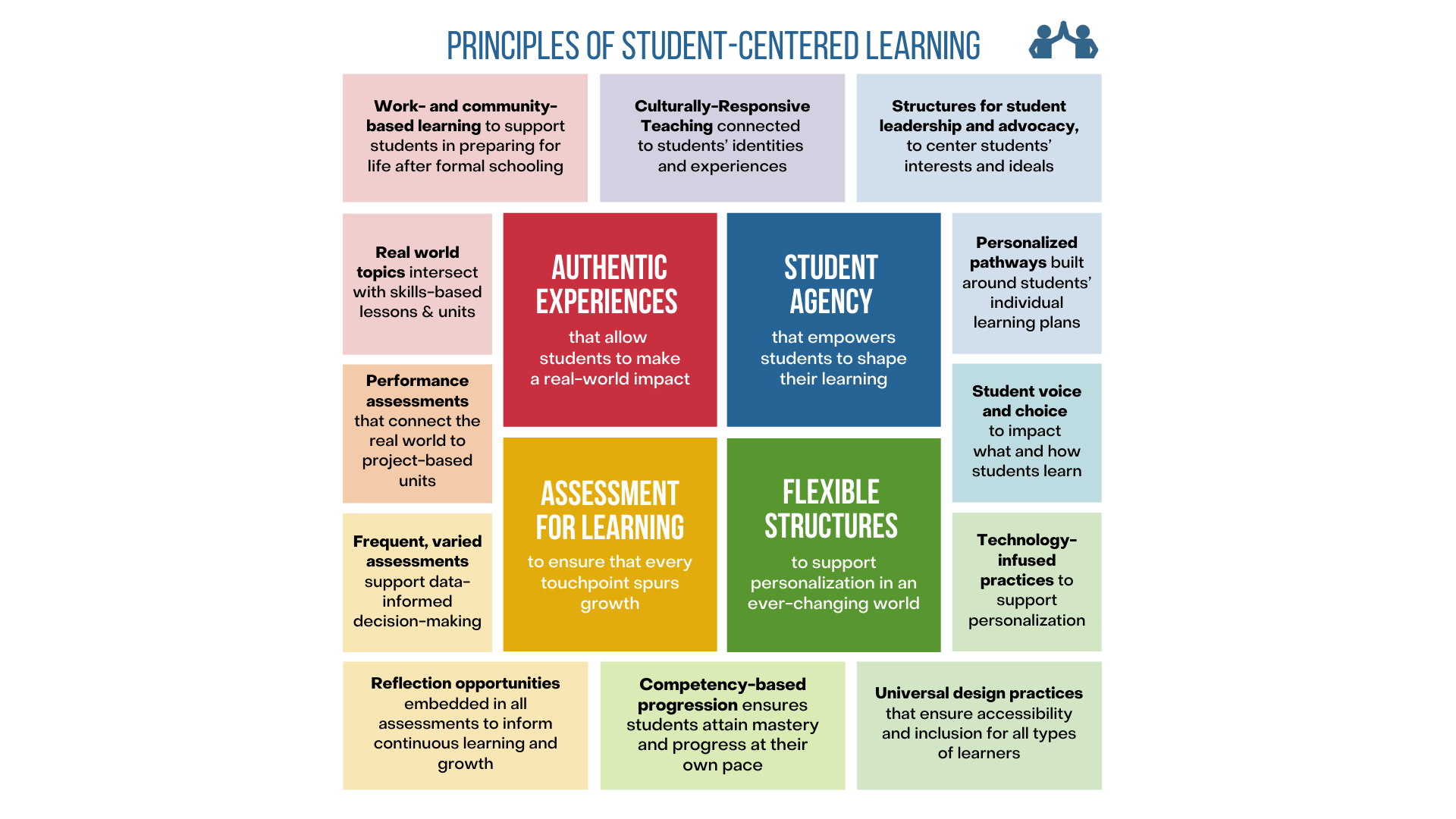What Saved Student-Centered Learning
By Diana Lebeaux, Director of Programs at The Teacher Collaborative
When I first heard the term “Student-Centered Learning” used, it was in the university context. While I was a teacher, sitting in a room full of other teachers, it was hard to see the term as anything other than a theoretical way of describing pedagogy that many of us, joining the profession in the late ‘aughts,’ saw as a kind of Platonic ideal. Ideal—both in the sense that it was something to which to aspire, and in the sense that it would always feel a bit unachievable in the real context of our lives as teachers.
Student-Centered Learning (called SCL by its superfans) was generally defined as an equity-focused pedagogy that allowed the interests, needs, and goals of the learners to drive instruction. When I left direct work with students to consult with teachers and leaders in the non-profit sphere, the term had picked up steam. Progressive educators, pre-pandemic, vacillated between embracing this brave new world of student-centered personalization—and becoming terrified of the ways in which the concept was co-opted, diluted, and—inevitably—weakened. What had first been a Platonic ideal, reserved for theory and the ivory tower, and then had been—for a tantalizing moment—the darling of the education vanguard, was on the cusp of becoming almost meaningless.
Like many other things, the pandemic changed all this. Student-centered learning was no longer capitalized like something abstract (or, worse, a commodity to be marketed) and instead became embedded in the DNA of strong, 21st-century teaching practices. Effective pandemic teaching required student-centered learning in order to work, along with its underpinning principles: flexibility, innovative assessment, student agency, and authenticity. Approaches like culturally-responsive teaching and technology-infused practices were no longer niche interests but, finally, recognized as endemic to strong, dynamic teaching.
What saved student-centered learning wasn’t a bunch of marketing executives agreeing on a shared definition, or the concept reaching some kind of tipping point in educational think tanks. What saved student-centered learning was the way in which teachers, increasingly, were drawn to the practices that it represented. During the pandemic, student-centered learning moved distinctly from theory to practice all around the country, as teachers put their fierce energy to the gigantic task of finding new ways to reach students where they were every day. A new recognition of systemic inequities and injustices, combined with the challenges of reaching students during remote and hybrid instruction, both necessitated and enabled so-called innovative approaches to become standard.
This didn’t happen automatically, of course. Throughout this period of flux, teachers found new reasons and new ways to collaborate. Where one teacher pioneered a performance assessment, others iterated on that approach to build their own. Groups of teachers found new ways to bring authentic and engaging topics into the classroom and volunteers piloted it until the approaches were refined. Amidst this energy, The Teacher Collaborative’s Co-Labs became more exciting than ever, providing a home base for “collaborative innovation” for teachers across Massachusetts.
Although I came to the Teacher’s Collaborative only half a year ago, I have found countless examples of student-centered principles at work with our teachers. And it is these examples, straight from practitioners, that contributed to the design of the Teacher Collaborative’s new student-centered learning framework. We see this framework as the touchstone for what is still an ongoing conversation. As we continue to create Co-Labs, platforms, and events where teachers can learn and problem-solve together, we hope that the framework serves as a kind of common language. It’s not a single answer; it is a kind of question to which every teacher has an answer of their own: in the world of student-centered learning, where is your growing edge?
The pandemic didn’t save student-centered learning; the pandemic simply provided the perfect storm in which it could be forged. What did save student-centered learning was that teachers wrested it from the hands of those fighting over it and made it their own. In the hands of practitioners, we hope that it keeps on being more than just an ideal, but a kind of continuum on which each educator is actively growing—and in turn, making schools a better place, even when the pandemic becomes a distant memory.
***
Interested in Student-Centered Learning? Join a Student Centered Learning Co-Lab for Leadership for an opportunity to explore student-centered practices and to collaboratively build a toolkit to share broadly with educators across Massachusetts. Learn more about Co-Labs here.

